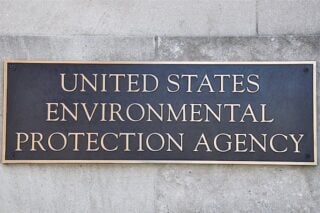Montana has a long-standing history of asbestos as a superfund program, which has caused thousands of residents to become ill. So far, $540 million has been spent by the U.S. government to remove more than a million cubic yards of dirt and contaminated building materials from over 2,000 Libby and Troy properties, but there’s still more to do.
A U.S. government plan has been in the works to address the ongoing situation and cleanup the asbestos contamination in the walls of houses, underground, and more in a way that minimizes future exposure to residents. The number of homes and businesses that are still contaminated with asbestos is unknown. U.S. Environmental Protection Agency (EPA) officials did not keep any documentation.
This plan was finally proposed on Tuesday for nearby towns of Libby and Troy. The EPA intends to keep asbestos-containing vermiculite in place, as the agency believes it to be of minimal risk with the ability to be safely managed.
The plan includes numerous “institutional controls” for the remaining asbestos such as zoning restrictions as to activities allowed on certain properties, permit requirements to not disturb specific soil and building materials, and firefighter and other advisories as they could come into contact and be exposed via work.
Many Libby residents strongly believe the asbestos will become airborne in the future with excavations, home renovations, and accidents, including fires. State regulators agree as seen in a letter to the EPA on April 2.
An EPA research panel last year in Libby concluded that breathing in just a small amount of asbestos could scar lungs and result in other health issues. Agency officials also claim Libby and Troy’s health risks have drastically decreased with airborne concentrations now being equal to other cities.
“We know they [EPA] are going to work only if we can get the community to buy in,” said Jenny Chambers, Montana’s Department of Environmental Quality Division Administrator. She also stated the EPA’s proposed monitoring of the remaining contamination is unclear. When “currently inaccessible waste becomes accessible” is another problem she noted.
About 15 years ago outside the town of Libby, the W.R. Grace and Co. mine was estimated to have caused 400 deaths and 3,000 sickened from exposure to its asbestos dust.
Millions of homes across the U.S. had vermiculite from the Grace mine used in them as insulation. In Libby, the mine’s unbeknown asbestos-contaminated waste was used as a garden-soil additive and fill for local construction companies.
“We’ve left a lot of this behind in these houses, and you always have the potential of people opening up that wall and running into it,” said Mike Noble, who worked for W.R. Grace and Co. as an electrician for over 21 years. He was diagnosed with asbestosis as a result of his work.
To continue work, the financial means must be in place for the future work. Local officials will also need to be able to provide the right help and information to homeowners, contractors, businesses, and others who might become exposed to the insulation.
A two-month public comment period will now occur to see if the proposed plan will move forward. If so, EPA officials think most of Libby’s work could be completed in the next ten years.





